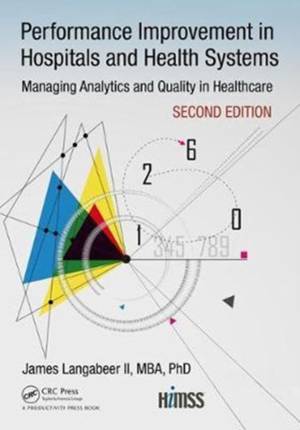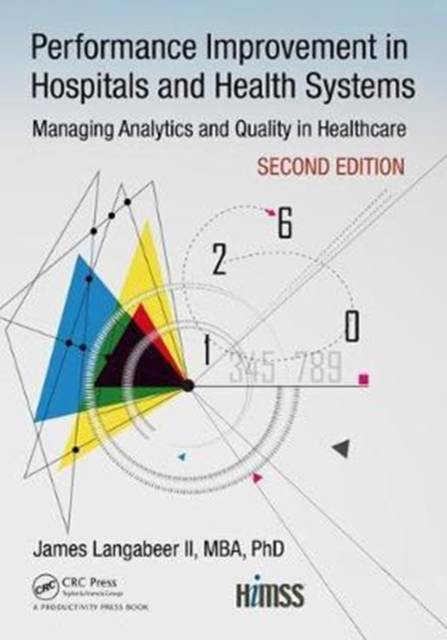
- Afhalen na 1 uur in een winkel met voorraad
- Gratis thuislevering in België vanaf € 30
- Ruim aanbod met 7 miljoen producten
- Afhalen na 1 uur in een winkel met voorraad
- Gratis thuislevering in België vanaf € 30
- Ruim aanbod met 7 miljoen producten
Performance Improvement in Hospitals and Health Systems
Managing Analytics and Quality in Healthcare, 2nd Edition
James Langabeer IIOmschrijving
Healthcare Organizations offer significant opportunities for change and improvement in their overall performance. Hospitals and clinics are generally large, complex, and inefficient, and need serious development in process workflow and management systems, which will ultimately lead to better patient and financial outcomes. The National Academy of Medicine has stated that hospital systems are broken, and that they must begin by "... improving hospital efficiency and patient flow, and using operational management methods and information technologies." In fact, costs and quality are two of the important aspects of the "triple aim" in healthcare.
One area that offers significant potential for improvement is through the application of performance improvement methods to patient and process flows. Performance improvement has a significant impact on a hospital's over financial and strategic performance. Performance improvement involves the deployment of quantitative and scientific methods to model and influence the functioning of organizations. Performance improvement professionals are tasked with managing a variety of activities, such as deploying new information technologies, serving as project managers for construction events, re-engineering departmental process workflow, eliminating bottlenecks, and improving the flow and movement of patients between resource-intensive clinical areas. All of these are high risk, and require use of advanced, sophisticated methods to improve efficiency and quality, while minimizing disruptions from change.
This updated edition is a comprehensive and concise guide to performance improvement in healthcare. It describes the management engineering principles focused on designing optimal management and information systems and processes. Case studies and examples are integrated throughout all chapters.
Specificaties
Betrokkenen
- Auteur(s):
- Uitgeverij:
Inhoud
- Aantal bladzijden:
- 229
- Taal:
- Engels
- Reeks:
Eigenschappen
- Productcode (EAN):
- 9781138296404
- Verschijningsdatum:
- 20/02/2018
- Uitvoering:
- Paperback
- Formaat:
- Trade paperback (VS)
- Afmetingen:
- 178 mm x 254 mm
- Gewicht:
- 439 g

Alleen bij Standaard Boekhandel
Beoordelingen
We publiceren alleen reviews die voldoen aan de voorwaarden voor reviews. Bekijk onze voorwaarden voor reviews.











